A global database of Holocene paleotemperature records
- PMID: 32286335
- PMCID: PMC7156486
- DOI: 10.1038/s41597-020-0445-3
A global database of Holocene paleotemperature records
Erratum in
-
Publisher Correction: A global database of Holocene paleotemperature records.Sci Data. 2020 Jun 15;7(1):183. doi: 10.1038/s41597-020-0515-6. Sci Data. 2020. PMID: 32541861 Free PMC article.
-
Author Correction: A global database of Holocene paleotemperature records.Sci Data. 2020 Jul 16;7(1):246. doi: 10.1038/s41597-020-00584-1. Sci Data. 2020. PMID: 32678108 Free PMC article.
-
Publisher Correction: A global database of Holocene paleotemperature records.Sci Data. 2020 Aug 12;7(1):271. doi: 10.1038/s41597-020-00611-1. Sci Data. 2020. PMID: 32788594 Free PMC article.
Abstract
A comprehensive database of paleoclimate records is needed to place recent warming into the longer-term context of natural climate variability. We present a global compilation of quality-controlled, published, temperature-sensitive proxy records extending back 12,000 years through the Holocene. Data were compiled from 679 sites where time series cover at least 4000 years, are resolved at sub-millennial scale (median spacing of 400 years or finer) and have at least one age control point every 3000 years, with cut-off values slackened in data-sparse regions. The data derive from lake sediment (51%), marine sediment (31%), peat (11%), glacier ice (3%), and other natural archives. The database contains 1319 records, including 157 from the Southern Hemisphere. The multi-proxy database comprises paleotemperature time series based on ecological assemblages, as well as biophysical and geochemical indicators that reflect mean annual or seasonal temperatures, as encoded in the database. This database can be used to reconstruct the spatiotemporal evolution of Holocene temperature at global to regional scales, and is publicly available in Linked Paleo Data (LiPD) format.
Conflict of interest statement
The authors declare no competing interests.
Figures

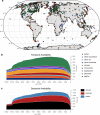
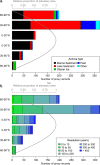

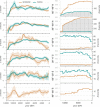
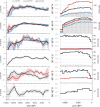
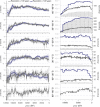

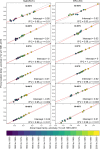

References
-
- Mauri A, Davis BAS, Collins PM, Kaplan JO. The climate of Europe during the Holocene: a gridded pollen-based reconstruction and its multiproxy evaluation. Quat. Sci. Rev. 2015;112:109–127.
-
- Harrison SP, et al. Climate model benchmarking with glacial and mid-Holocene climates. Clim. Dyn. 2014;43:671–688.
-
- Bartlein PJ, et al. Pollen-based continental climate reconstructions at 6 and 21 ka: A global synthesis. Clim. Dyn. 2011;37:775–802.
-
- Viau, A. E., Gajewski, K., Sawada, M. C. & Fines, P. Millennial-scale temperature variations in North America during the Holocene. J. Geophys. Res. Atmospheres111 (2006).
-
- Marcott SA, Shakun JD, Clark PU, Mix AC. A reconstruction of regional and global temperature for the past 11,300 years. Science. 2013;339:1198. - PubMed
Publication types
Grants and funding
LinkOut - more resources
Full Text Sources

